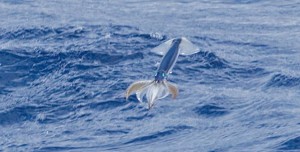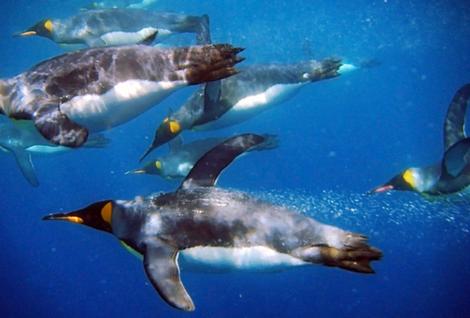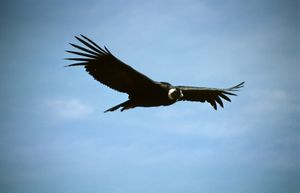One of the most mysterious gliding animals that can be found in nature is the flying squid. Flying squid are cephalopod mulluscs and of the Ommatostrephidae family. Several species include the Humboldt squid, the Neon Flying squid, and the Japanese flying squid. They can range in size from 10 cm long to 100 cm long.

http://www.dailymail.co.uk/sciencetech/article-1338220/Graham-Ekins-Japanese-squid-photos-leap-air-dodge-predators.html
The behavior of flying squid had not been documented until 2001 when biologists Macia and Michael Robinson observed a squid leap out of the water and travel about 10 meters in the air at a height of about 2 meters. This immediately sparked their interest, and by 2004, along with several other biologists, they came out with a study on the flight of the flying squid. Although the study did not conclude anything about the mechanics of the flying squid, it did point out the squids’ ability to move through the air is much more than just the fish launching themselves out of the water.
Despite no definite conclusion on nature of their flight, scientists have gained somewhat of and understanding as to how it works. The squids propel themselves out of the water by shooting water from their siphon. They are the only animals known to use jet propulsion as a means of flight. Once airborne, they curl their arms up and spread their fins. Scientists believe these manipulations create lift and stability for the animal. It has been observed that they even flap their fins. This led Macia to suggest that they fly rather than glide because of their fins are active.
Another question remains unanswered about the flying squid, why do they fly? In many cases they have been observed in flight while being chased, so it would stand to reason that they use it to effectively escape predators.
Up to this point not much more is known about the flying squid. Their flight is extremely rare to see in nature. Very few pictures and no videos have been taken of them. Despite this, scientists will certainly be seeking more definite explanations as to how flying squid are able to achieve their prolonged flight.
References:
- Compagno, Martina. Vecchione, Michael. Young, Richard. “Ommastrephidae” October 11, 2011.
- “Gliding Liazrds, Frogs, and Ants” Map of Life. October, 2011.
- Jabr, Ferris. “Fact or Fiction: Can a Squid Fly Out of Water?” Scientific American. October 11, 2011.


